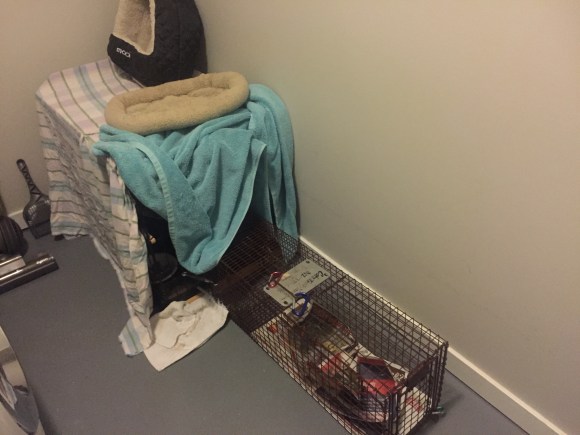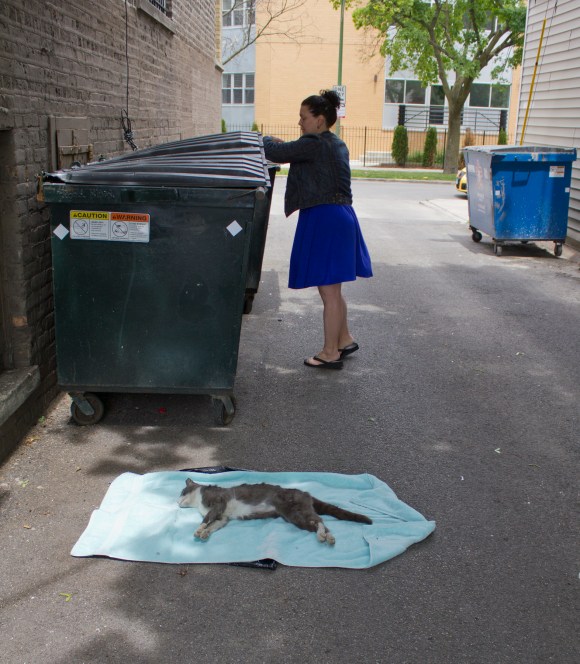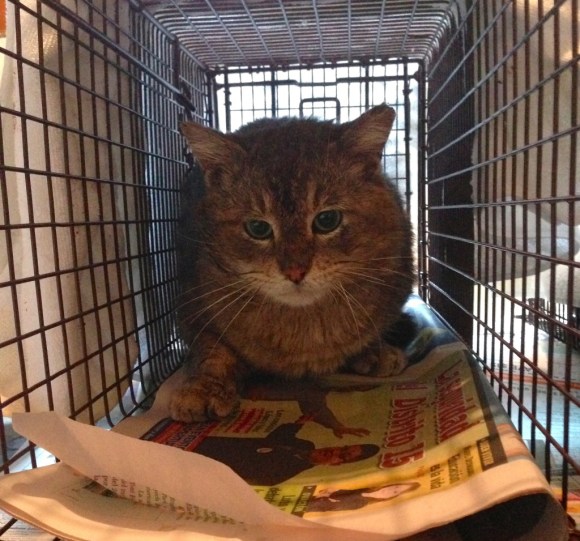TNR Team Effort in Trapping a Colony
Twelve cats and kittens were trapped at the Catalonia Colony in one alley so far.
Oleksandra and Kim volunteered to help a TNR request from PAWS Chicago for this colony cared for by Bonnie, a feeder in Hermosa. There are A LOT of cats in Hermosa – it kind of reminds me of how my neighborhood used to be a decade ago. Joann and I also then joined efforts in trapping, transporting, recovering and returning the cats. Jenny N., the clinic director of PAWS, also continued to help us with transporting the cats back and forth from the clinic. We are very grateful for all of her help this year! The entire colony that Bonnie knows about are now all spayed/neutered, but we know there are more cats out there and will continue trapping.
The three kittens were immediately admitted to PAWS Chicago.

They were trapped first, along with some adult cats, almost all of them feral.

This photo shows Kim’s recovery room. Catalonia is in one of these traps, and we named this colony in honor of him because of all of the hilarity – ahem, I mean worry – that he put her through. Catalonia managed to get out of his trap, and spent a few good days loose in the room. He was absolutely fine, but it took some time to get him hungry enough to go back in the trap on his own. One of his favorite spots during those few days was hanging out in the window.

Once he was trapped again, he was TNReturned and very happy to be back with his siblings and bonded friends in the colony outside.
Bonnie thinks Barcelona was the mama cat of the kittens. It makes sense, as she was so frantic to get out of the trap, that she rubbed her nose raw against it. Barcelona also has an issue with her right eye. PAWS kept her for observation for a few days in a dog crate, and then decided she was healthy enough to be returned outside. Per the head vet at PAWS, she is already losing that eye, and the lid is slowly closing over it. It is not causing her any pain. Should she show signs of any infection or anything else in the future, Bonnie will call us and we will re-trap Barcelona for further treatment.

Madrid was a pregnant female, TNReturned.

Seville is just one of three male cats from here, now TNReturned.

Along with Bilbao. He was seen further down the block from Bonnie.

And was trapped easily.
 Valencia is a tortie, so obviously she is female, now TNReturned.
Valencia is a tortie, so obviously she is female, now TNReturned.

Lugo is another female cat trapped a few days later.

Bonnie is so grateful to have all of the cats back. They live in her beautiful, clean yard where she feeds daily and has shelter for them under her front porch. Kim also purchased additional Rubbermaid bin shelters for her. I returned the cats back to Bonnie’s car port, where the cats shot out of her traps straight into her yard.

We were told that there are four more kittens further down the same block. Just a few days ago Oleksandra trapped this calico while looking for the kittens. The calico is obviously friendly so Oleksandra put her in her bathroom before taking her to PAWS.

At PAWS they found out she was already spayed. They gave her a microchip, updated her vaccinations, and tested for FIV/FeLV in case she would be admitted for admission. She tested negative. Oleksandra went door to door on that block and found her owner! The owner said her name is Marigold and she has two other spayed/neutered pet cats. They are all now reunited.
This project is ongoing and I am confident it will be done soon! If you live in or near Hermosa in Chicago and would like to help, or have any more information about outdoor cats there, please call us at 773-609-CATS (2287) or email at [email protected]
















































































